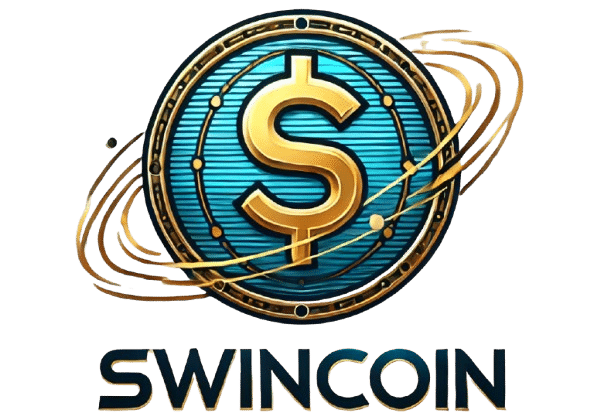You’ve probably heard of MetaMask, a popular Ethereum wallet used by millions. But have you ever wondered how to use it with Solana, a high-performance blockchain that’s gaining traction in the crypto world? If so, you’re in the right place.
In this article, we’ll delve into the fascinating blend of Solana Network and MetaMask. We’ll explore how these two powerhouses can work together, enhancing your crypto experience. Whether you’re a seasoned crypto enthusiast or a novice, there’s something for everyone to learn.
So, get ready to embark on an enlightening journey that’ll deepen your understanding of the crypto ecosystem. Let’s uncover the synergies between Solana and MetaMask, and how you can leverage them to your advantage.
Understanding the Solana Network
Looking at blockchain networks that cater to developers and end-users alike, Solana certainly stands out. This part of the article provides intrinsic details about this high-throughput network that also supports MetaMask.
What Is the Solana Network?
Solana is a prominent high-performance, permissionless blockchain. What sets Solana apart isn’t solely its capability to produce fast, secure transactions, but the methodology behind this achievement. It operates on a unique architecture known as Proof of History (PoH) — a timestamp system that permits greater scalability and speed. Recognizing its benefit in terms of ‘transactions per second’, developers often choose to build decentralized applications (DApps) on Solana.
Speculations about compatibility of Solana with MetaMask—a popular Ethereum wallet—may arise as MetaMask primarily supported Ethereum-based protocols. So the question five ‘Does MetaMask support Solana?’ is an understandable one. You’d be happy to hear that, yes, MetaMask can indeed support Solana. This alliance lets users effectively utilize Solana network through MetaMask, broadening the scope for transactions and interactions in the crypto ecosystem.
Key Features of Solana
The utilization of Solana’s unique architecture results in several key features that lead developers and users to add Solana network to MetaMask:
- High Speed & Scalability: Solana processes 50,000 transactions per second (TPS), enabling it to handle vast volumes of transactions swiftly.
- Low Fees: One of Solana’s standout features is its nominal transaction fees, making it favourable for frequent and micro-transactions.
- Rich Ecosystem: Solana offers a rich, expanding ecosystem of DApps and platforms, providing users and developers with increased options and opportunities.
- Interoperability: Solana’s compatibility with Ethereum enables elements designed for the Ethereum network to operate on the Solana network.
- Security: Solana uses innovative security mechanisms like PoH and PoS (Proof of Stake) to keep the network safe.
- Easy Integration with Wallets: Users can add Solana to MetaMask without any hassles, allowing for secure management of Solana assets.
The combination of these exceptional features with the wide acceptance of MetaMask represents a significant synergy. It provides an ideal platform for the acceleration of the ongoing adoption of blockchain technology. Not only can users add Solana to MetaMask, but they can also buy Solana on MetaMask—making the crypto experience more seamless for all users.
The Role of MetaMask in Cryptocurrencies
Moving forward on our exploration of the Solana Network and MetaMask, let’s delve into how MetaMask works, and its supportive role in the Ethereum network. Familiarizing yourself with the utilization and support of MetaMask to various cryptocurrencies provides insights into its pivotal role.
What Is MetaMask?
MetaMask, a browser extension for accessing Ethereum enabled distributed applications, acts as a bridge connecting users to the Ethereum network. Available in most web browsers, it functions as a wallet for Ethereum and other Ethereum-based tokens. Not only does MetaMask serve as a storage facility for your digital assets, but it’s also a tool that allows you interact with decentralized applications (dApps) straight from your browser. This facility indicates the possibility of adding Solana to MetaMask, a feature cherished by many crypto enthusiasts and developers.
Example: Consider the “metamask solana” query, hinting towards the interest in integration of these two platforms. The robust and secure nature of Solana tied to the user-friendly and functional MetaMask provides a cohesive ecosystem for developers and users.
How MetaMask Supports Ethereum
Acting as a vital piece of the Ethereum machinery, MetaMask allows you to manage your Ethereum Wallet and interact with dApps without running an Ethereum node. It executes this by injecting a javascript library called web3.js into every site’s javascript context, providing websites access to the Ethereum blockchain.
MetaMask also aids in signing blockchain transactions, allowing you to send and receive Ether with minimal effort. It simplifies the obstacles that user might face when interacting with Ethereum-based dApps. The bridge MetaMask creates between users and Ethereum network makes it easier for novices to step into the world of blockchain technology, symbolizing the pathway of how to add Solana Network to MetaMask.
Example: “Solana network metamask rpc” is a term often utilized by developers pointing to the remote procedure call (RPC) that enables interaction between MetaMask and Solana. The Solana RPC API operates as a key facilitator in this interaction, enriching the cryptocurrency experience.
By now, the clarity on having MetaMask, not just as an Ethereum wallet but as a pivotal actor connecting users with blockchain technology, should be clear. With its ability to integrate other platforms such as Solana, it enhances its usability and functionality, leading to a more robust cryptocurrency network.
Integrating MetaMask with Solana
Challenges in Integration
Optimizing MetaMask for use with Solana isn’t a straightforward process. Solana, a high-performance blockchain, operates on a different protocol than what MetaMask, traditionally an Ethereum-based wallet, was designed for. Understanding these fundamental differences represents the first hurdle in the integration process.
For instance, MetaMask uses the Ethereum Virtual Machine (EVM), while Solana utilizes the Solana Runtime, a unique program similar to an EVM but designed specifically for Solana. This inconsistency creates an initial challenge, add Solana to MetaMask as it requires the mapping of EVM instructions to Solana Runtime Functions.
Also, MetaMask relies on proof-of-work for transaction validation, in contrast, Solana utilizes a proof-of-history consensus mechanism. This divergence in consensus algorithms necessitates a significant reinterpretation of relevant items in the integration phase.
Another significant obstacle to overcome is the network compatibility. Syncing the Solana Network, recognized for its high-speed processing of decentralized applications, with MetaMask necessitates configuring RPC URLs and chain IDs, for instance with Solana rpc url for MetaMask and Solana chain id MetaMask respectively.
Benefits of Using MetaMask with Solana
Despite the challenges mentioned earlier, integrating MetaMask with Solana carries considerable potential benefits to the users. The principal advantage of MetaMask Solana integration enables MetaMask users to explore the speed and low transaction fees associated with the Solana network. With Solana’s blockchain offering more than 50,000 transactions per second, users can make rapid and seamless transactions, an attractive prospect for most.
By adding Solana to MetaMask, you’re also embracing the incredible diversity of decentralized applications (DApps) developed on the Solana network. Many of these DApps have already drawn considerable attention, inviting a broader user base and enthusiasm among developers. Therefore, with Solana network MetaMask setup, the usability of DApps can be improved significantly, enhancing the overall user experience.
Lastly, the integration of MetaMask and Solana potentially encourages wider adoption of cryptocurrencies. By bridging traditional Ethereum-based wallets with modern, high-speed networks like Solana, more users can transition into the crypto space with ease. It’s an exciting step toward the future of blockchain technology and digital finance.
User Experience on Solana with MetaMask
Under this section, you’ll find detailed insights into setting up MetaMask for Solana and its transaction experience and speed. This information offers a thorough understanding of the intricacies involved, guiding you in your interaction with the Solana network using MetaMask.
Setting Up MetaMask for Solana
Adding Solana network to MetaMask isn’t an arduous task. Primarily, ensure that you’ve correctly installed the MetaMask extension on your web browser.
- Open the MetaMask extension and go to ‘Settings’.
- Scroll down and find ‘Networks’.
- Click on ‘Add Network’ and enter the Solana RPC URL.
- Fill in the remaining fields, namely: Network Name, New RPC URL, Chain ID, Symbol (SOL), and Block Explorer URL.
- Click on ‘Save’ to add Solana to MetaMask.
Your MetaMask wallet can now hold Solana, and you can interact with the Solana network directly.
Transaction Experience and Speed
Once you’ve added Solana to MetaMask, the first thing you’ll notice is the incredible transaction speed. As the Solana network is designed for high performance, it ensures approximately 65,000 transactions per second (TPS) – a feat rarely matched in the crypto universe.
In terms of user experience, buying Solana on MetaMask can be done easily, thanks to its intuitive interface. Similar to other cryptocurrencies, Solana transactions are carried out in mere seconds, and the transaction costs are negligible compared to other blockchain networks.
The integration of MetaMask with Solana truly signifies a leap in terms of accessibility and efficiency, offering a seamless blockchain experience to users across the globe.
Please note, although the process of adding Solana network to MetaMask is straightforward, care must be taken to ensure correct network information is used. This information can be found from trusted sources or the official Solana website.
Conclusion
The integration of MetaMask with Solana is a significant step forward in enhancing user experience and blockchain technology adoption. Despite the technical challenges, it’s clear that the benefits outweigh the difficulties. The setup process is straightforward, making it easy for you to interact directly with the Solana network. The speed of transactions and low costs are key advantages that can’t be overlooked. This integration is not just about convenience, but also about fostering accessibility and efficiency in blockchain interactions. It’s a testament to the continuous evolution and potential of blockchain technology.
1. What is the primary focus of this article?
This article primarily focuses on the integration of MetaMask with Solana, discussing the benefits this brings to users as well as implications for blockchain technology adoption.
2. How does MetaMask function?
MetaMask serves as a bridge to the Ethereum network and supports digital assets, allowing users to interact with Ethereum’s blockchain.
3. What are the challenges of integrating MetaMask with Solana?
The challenges stem from protocol differences and compatibility issues between the two platforms, which the article delves into.
4. How is MetaMask set up for Solana?
Setting up MetaMask for Solana is simple and direct, as explained in the latter part of the article, offering improved transaction speed and user experience.
5. How does adding Solana to MetaMask benefit users?
Users can interact directly with the Solana network, benefitting from fast transactions and low costs, which ultimately increases the efficiency and accessibility of blockchain interactions.






